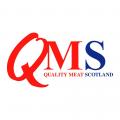
The first year of the GrasscheckGB programme has delivered strong results for the nine beef and sheep pilot farms in Scotland.
GrassCheckGB aims to improve grassland productivity and pasture utilisation on dairy, beef and sheep farms through a grassland performance monitoring network.
This project is a collaboration between Quality Meat Scotland (QMS), Hybu Cig Cymru – Meat Promotion Wales (HCC), the Agriculture and Horticulture Development Board (AHDB), together with CIEL (Centre for Innovation Excellence in Livestock) and researchers at the Agri-Food and Biosciences Institute (AFBI) and Rothamsted Research, as well as industry sponsors Germinal, Waitrose and Partners, Sciantec Analytical, Datamars Livestock and Handley Enterprises Ltd. CIEL is supporting the purchase of equipment on farms through funds from Innovate UK, the UK’s Innovation Agency.
Pilot farmers are required to measure grass each week throughout the growing season, with regular grass samples taken for quality analysis. Each farmer has an electronic plate meter to measure grass yield on their farm and an automatic weather station to record key meteorological data such as temperature, rainfall and sunlight levels.
The recent end of year report has highlighted Scottish on-farm grassland production averaged 11.298t DM/ha. Through rotational grazing and measuring grass weekly, Scottish farms managed to utilise over 80% of the grass grown, showing a high level of technical expertise from the Scottish pilot farmers.
Regional grass growth differences were shown to be linked to weather conditions, with the south of England experiencing extreme summer heat followed by a very wet autumn. This was confirmed by the on-farm weather station data with Scotland recording the UK’s highest grass growth rates during June and July due to an ideal combination of soil moisture and temperature.
One of the pilot farmers, John Ritchie of Montalt Farm near Perth said he has seen many benefits of being part of the project.
“The output at Montalt farm has increased from 380kg to 540kg of live weight sold per hectare over the last five years because we’ve learned how to utilise our grass better by rotating stock and measuring,” explained Mr Ritchie. “As a business, we are now looking to grow an average of 9000kg of dry matter per hectare on our improved ground.”
Mr Ritchie added that paddock grazing has also helped him reduce fertilizer use significantly.
“In 2019 we didn’t use any fertiliser on our grazing fields and hope this will continue due to better understanding of grass management. Only 75 units of Nitrogen has been used on the ground set aside for silage and we are looking to reduce this further in the future,” he added.
John Evans, Cattle and Sheep Specialist with Quality Meat Scotland (QMS), said: “We’ve just entered the second year of the GrassCheckGB programme and farmers will continue to measure grass each week until October, which will be reported to the industry on a weekly basis.
“The automated on-farm weather stations will continue to take regular readings and this, along with the grass data, will allow farmers to make timely management decisions.”
GrassCheckGB publishes weekly summary bulletins on twitter (@GrasscheckGB) throughout the grazing season, detailing average farm grass growth rates across the country, soil conditions and weekly total rainfall. Bulletins include management notes tailored to the current conditions recorded on project farms throughout the grazing season.
For more information and to find your nearest Grasscheck farm go onto the project website at grasscheckGB.co.uk.



Comments: Our rules
We want our comments to be a lively and valuable part of our community - a place where readers can debate and engage with the most important local issues. The ability to comment on our stories is a privilege, not a right, however, and that privilege may be withdrawn if it is abused or misused.
Please report any comments that break our rules.
Read the rules hereComments are closed on this article